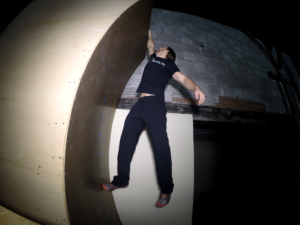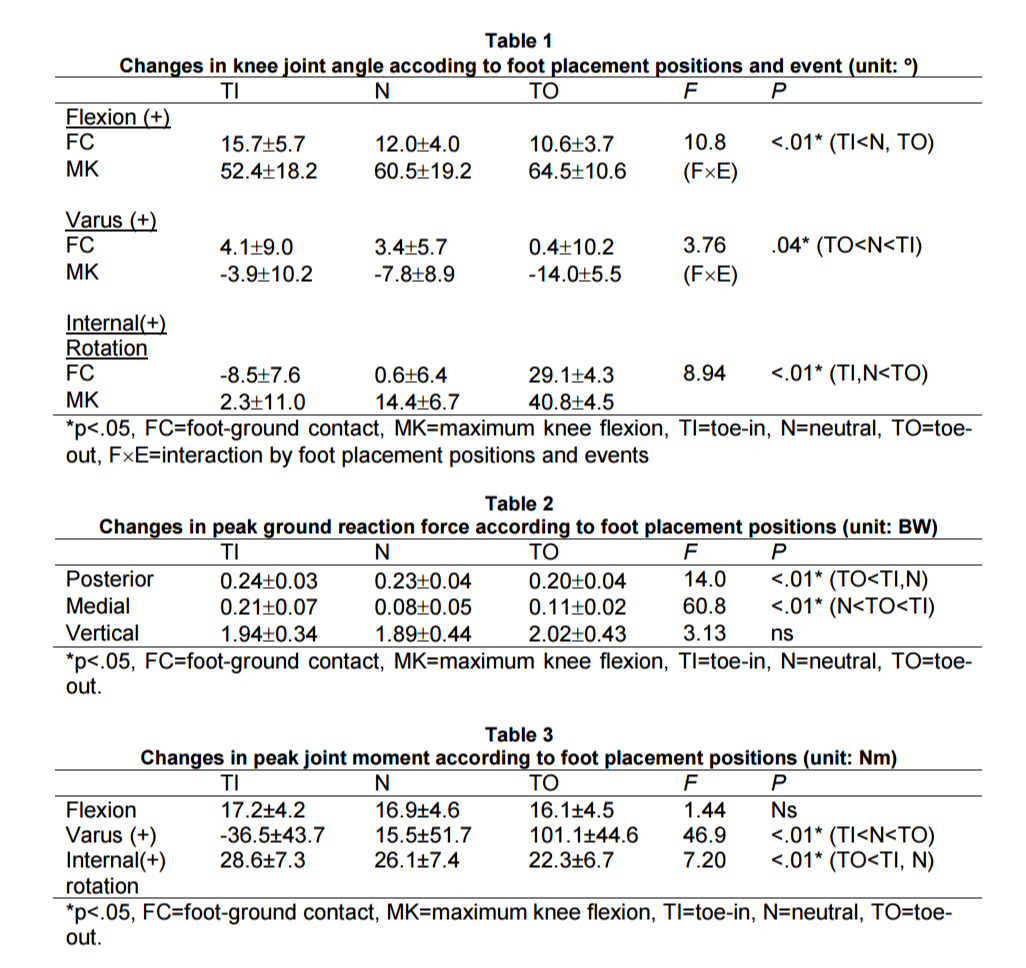June 2016 Events at Rochester Parkour
|
[/fusion_builder_column][/fusion_builder_row][/fusion_builder_container]
|
[/fusion_builder_column][/fusion_builder_row][/fusion_builder_container]
Written by Charles Moreland
Approx. read time = 16-20 minutes
Oh boy! It’s that time of the year again! The time of the year when some of America’s ninja-like people and ninja wannabes will be presented to America for their viewing pleasure the way it was always intended: under bright flashy lights, commentated by witty, comedic TV personalities, regular people and athletes alike bouncing along on top of soft, squishy, and brightly colored obstacles, and every failure is noted with a loud SPLASH! It’s American Ninja Warrior season!!!
I have a love/hate relationship with American Ninja Warrior.
Let me start off by saying that I genuinely love watching ANW. Everyone has a different reason why they may like it. Perhaps its because they love watching average Joes getting a spotlight for once in their life. Or perhaps it’s because unlike a sports game which is aired live, ANW breeches the gap between live action sports and YouTube – NBC edits hundreds, if not thousands, of hours of footage together to make an action-packed TV show from start to finish. Maybe you’re like me, someone who knows that this is a Reality TV show and find some of the fabricated drama they present to be equal parts heart-breaking, hilarious, or down-right frustrating – the emotion matters regardless of what it is. This process has become so ridiculous in the last couple seasons that SNL has even made an entire sketch out of it!
On the other hand, maybe you’re also like me and know what a tic-tac, cat-to-cat, kong-pre, or wall pass is and get frustrated that Matt and Akbar sometimes choose to make-up their own names for techniques while commentating instead of doing research and knowing that most of these techniques already have names that stem from either the Parkour or Climbing disciplines (I’ll be fair, though, they’re getting better!). And yet, while I can appreciate American Ninja Warrior as an entertaining show, as someone whose livelihood is in parkour/movement based fitness, I hate what NBC has done to the Sasuke/Ninja Warrior franchise.
The worst hit victims of this fake-sport are kids – the ones who do not, or cannot, process the separation behind what constitutes a sport like football and a reality tv show with fabricated drama, like ANW. It’s an ongoing inner battle I have as an instructor of kids and youth on an almost weekly basis as my kids watch me (and many other gym members who do not get featured on ANW) scale our 14’6″ warped wall 8 times within a minute, lache (swing from one bar to another) 10′ gaps, balance on bars 8ft off the ground, and teach the kids how they can begin their journey to do the same. What am I, as their instructor, supposed to say to them when they ask me why I haven’t been on the show or why I’ve chosen to stop submitting applications to NBC to be on the show? Why has it become my responsibility to choose between letting them down as their role model or ruining their delusion that ANW is a sport that operates just like any other sport? (Hint: it’s not).
Let it be clear, a contestant’s physical fitness or movement aptitude is not a golden ticket to get featured on the show. In America, prospective contestants must submit a casting call to a casting agency that NBC has chosen. While I’m sure physical abilities are taken somewhat into account, most of the casting call is filled with questions that delve into your personality. Questions like: “What is the hardest emotional thing you’ve ever had to overcome?” These questions, which have nothing to do with your ninja like abilities, become the micro-dramas that NBC will edit into the final cut of the show that grabs the audience’s attention and, more importantly, their heart strings.
The show is a Reality Television series first and foremost and NBC has done an incredible job boosting it and making it the hit show it has become. We live in a sad reality (pun intended) where reality tv remains one of the top money makers for television studios. Sasuke (the original Japanese show that American Ninja Warrior is based on) has done an incredible job in its 30+ competitions at staying entertaining while also continuing to showcase their competitor’s physical fitness and skill. While I couldn’t find much on the audition process of Sasuke, I was able to discern that they have in-person auditions which includes a physical fitness screen. However, despite how well the Japanese show has done, Google Trends shows just how effective Reality TV actually is:

Blue = Sasuke, Red = American Ninja Warrior
The spikes are incredible! Every season when ANW hits the air, searches literally skyrocket! I’m using this graph to showcase exactly how good the marketers and PR agents at NBC are at their jobs. They seriously know how to shift public perception and maybe they’re even too good at it! I literally just finished reading this article on why ANW could be the future of sports television. Are they joking?! Do they really not realize that every person on the show had to audition for the part the same way an actor might for any other television show? However, unlike those actors, these people will not be paid for being put on tv! Do they not realize that America’s true top Ninja might never be allowed a shot at the course because their background story isn’t interesting enough?! Imagine if J.J. Watt, Peyton Manning, or Tom Brady were never picked in the draft because they didn’t have a compelling enough story… And this brings me to the real point of this article: as much as I dislike the sport ANW claims to be, as an owner of a Parkour Gym, I have no choice but to care. Here’s why:

Search Queries: Blue = “Parkour Classes”, Red = “Ninja Warrior Classes”, Yellow = “Ninja Warrior Gym”, and Green = “Parkour Gym”.
Every season of ANW brings a spike in search trends, but not only for the show. Every spike in ANW search since 2012 has coincidentally caused a spike in both “parkour gym” and “parkour classes” search queries. Interestingly, the rapid growth of “American Ninja Warrior” search has not yet caused any growth in “Ninja Warrior Classes”. Just so everyone is clear on the relationship between watching ANW and possibly deciding to partake in Ninja Warrior-styles of fitness, here’s the graph:

That red line is “ninja warrior gym”, the same search as the yellow line with all the crazy spikes portrayed in the previous graph. When you look at the big picture, not a lot of people are interested in pursuing ninja warrior training. To cover all my bases, here’s the graph with how ANW relates to “parkour” search (take note of the shapes, I’ll touch on that soon):

And here’s Parkour vs parkour gym side-by-side with American Ninja Warrior vs ninja warrior gym:

Search queries: Blue = parkour, Red = parkour gym

Search queries: Blue = American Ninja Warrior, Red = ninja warrior gym
Even in the realm of parkour and parkour related media, consuming media of an athletic interest does not equate to willingness to participate in that athletic interest. I’m sure this isn’t new knowledge. Think of how many people watch and search for American Football or NFL yet have no interest what-so-ever in training like their favorite football players. Still, despite that truth, parkour is not the same as ninja warrior – not even close. See those spikes for ANW? Spikes like that are text-book identifiers for sports (which parkour is not), and I’ll discuss those in a moment.
What I’d like you to see now is that once you break the plane between a consumer of media and a prospective participant and zoom in to those who are actually interested in training in either parkour or ninja warrior, you see that regardless of the differences between them, they are linked in the public eye. ANW season begins – searches for both spike. Nothing will change this tomorrow, unless NBC decides that their ROI in growing American Ninja Warrior is no longer suitable for their stock holders and drops the show. Or, as long as ANW continues to allow “parkour” to be said on the show (remember, this show is not live and the producers can edit the raw footage however they wish to portray the things they want). As far as the data is concerned, the public has so far deemed that parkour and ninja warrior are linked. Linked, but not the same!
To be clear, I want you to understand, whether you be a fellow gym owner such as myself and Nicole from the Rochester Parkour Gym, a parkour athlete like Dylan Baker, a ninja warrior competitor like Elet Hall (he’s actually both a parkour athlete and ninja warrior competitor), or an enthusiast from either and just like watching the excitement, that while American Ninja Warrior is a fabulous and entertaining show, it is not a training discipline just like American Football is not a training discipline. But then again, ANW is also not a real sport – it’s an impostor of one… The graphs even match!

Search query: American Ninja Warrior

Search query: American Football
I get that they don’t EXACTLY match. But keep in mind, American Football has been around over a hundred years! If NBC keeps going with ANW, I’m positive the trend of seasonal spikes will continue. The thing is, interest in a sport (a performance of physical ability with rule sets and regulations) is identified by a spike in interest during a time when that sport is active or has media available to consume. Interest in a discipline, while it may have spikes in interest, is not identified by regular, seasonal, or planned spikes in interest. Here’s generic “parkour” as a search term again:

Search query: Parkour
Spikes in interest for a training discipline follow no real schedule or plan. They may be linked to a viral video, an increase in physical presence in a person’s life (parkour gyms for instance), or some other public event like an interview with someone from parkour on a popular morning show or an article in a largely viewed printed publication. Parkour spiked in 2004 and 2005 because of YouTube and people making videos of their training and labeling them as “parkour”. This is something that cannot be planned. It just happened.
But do you want to know why I’m really pissed at ANW and NBC? It’s because of this:

Blue circle = ANW’s 2013 season 5, Green circle = ANW’s 2014 season 6, Red circle = ANW’s 2015 season 7
In 2013, ANW didn’t even come close to matching searches for parkour, yet still caused a spike in “parkour gym”, “parkour classes”, and “ninja warrior gym” searches. In 2014, for the first time EVER, ANW surpassed searches for parkour. That is an incredible feat and I’m sure the marketing agency behind it was given some fantastic bonus checks that year. Again, in that year, and with that spike, searches for “ninja warrior gym” and “parkour gym” not only spiked, but they matched! That’s crazy cool. But then comes last year, 2015. This is the year that really made me want to write this article. Unlike their stellar 2014 year, ANW searches DID NOT surpass parkour, yet when you zoom in, search queries for “ninja warrior gym” almost doubled that of “parkour gym” searches which also UNDER PERFORMED its spike from 2014! Interest in parkour gyms literally lost ground and shrunk instead of growing as usual, in 2015.
“Sounds like you’re a little butt hurt, Charles” you might say. And yeah, I might just be a little butt hurt. I might just be pissed that my life’s work growing this discipline of movement (named parkour) is suddenly being phased out by a large corporation with an advertising budget of almost $100 million dollars. Or maybe I’m just livid that this televised obstacle course competition, which was once fueled by parkour athletes like Levi Meeuwenberg, was bought by NBC who has been actively working to phase out most, if not all mention of the term “parkour.” Yeah. Read that again. They have done a ton of background editing to stop the mention of the very discipline whose name means ‘obstacle course.’ How do I know this?

So maybe you’ve noticed, I’ve name-dropped Elet Hall more than once so far in this article, and it’s only partially because he’s spent the night on my couch before. It’s mainly because Elet feels the way I feel but has actually been on the show and became one of their recurring characters before publicly announcing this year that he was not going to submit anymore. Elet’s story is fascinating. Maybe he should write a book. I only asked him for a few short comments that I could use for this article and he sent me over 5 pages of writing of his experiences and thoughts on ANW.
Most importantly of those 5 pages, Elet made clear that he quit because he realized he was no longer being presented as himself. Elet was turned into a made-for-tv version of himself and, if you were to know Elet, you’d know that he hates that. According to Elet, during every interview was assigned to him a producer who would coach him into saying the things they wanted him to say. He was once asked, “Why do they call you ‘The Natural’?” To which he replied, “Who calls me ‘The Natural’?!” He had never heard the nickname before. It was made up by the producers of the show and the producer standing next to him proceeded to explain to him that that was to be his new personality and how he should go about answering the question.
With regards to direct censorship of the word “parkour”, Elet had a lot to say. I’ll admit that nothing can be labeled as direct evidence, but I will convey that Elet was adamant in explaining that he was nothing more than a ‘traceur’ (a practitioner of parkour) and had been since the age of 14, whenever possible on the show set. He only tried out for Ninja Warrior because some parkour friends of his (who also participated in the early seasons) encouraged him to do so. “I’ve never trained a day in my life for ninja warrior,” Elet said. “That’s not an egotistical claim, ” he continued, “that’s a testament to what years of proper parkour training can do for you.” And you know what’s amazing about that? Elet didn’t just do well on ANW. He obliterated it! Part of his last submission tape was him explaining how in the previous year he beat everyone else’s scores by almost 30 seconds, and oh yeah, turned out he had Lyme’s disease during all of it! Check out this run from 2015!
“I made it my personal mission on ANW to display parkour.” Elet did all of that and more. Except, what does an uneducated public know of this super athlete’s training discipline if they don’t know what it’s called? Nothing. At best, they tie it to the closest thing they can, “ninja warrior training.” And guess what? I have a graph for that too!

This pisses me off and again, I wouldn’t be so pissed if ANW did any sort of due diligence and allowed Elet to be who he wanted to be and portray himself for the man he is. Elet said he made it his personal mission to make sure parkour was known. He told me that he mentioned it in EVERY interview! And of those interviews, guess how many times mentions of his “parkour training” came through? Not a one. Nothing. Edited out as if they didn’t exist. He wasn’t even labeled as the parkour athlete or coach that he is (it’s how he makes most of his living). On ANW, Elet was labeled as “a ski lift operator, a survivalist, a mover, but never as a parkour coach, or a traceur,” he said. That video up there of his 2015 run? How many opportunities would you say there were for Matt and Akbar to mention Elet’s preferred method of training? And yet, how many times was it mentioned? Almost a decade of Elet’s hard work in parkour training was stolen from him and instead branded as his own ‘natural ability.’
To add on more fuel to this passion driven fire I’ve begun, ANW’s season 4 casting call form had a new addition: “If you are a freerunner or Parkour athlete, what else do you do for work?” So exclaims Elet, “Here
On top of all of this, as my last comment in this mini-rant I have going, as a gym owner I’m torn between giving my members what they want and providing it in a safe way. But you know, there’s one unique thing in the Rochester Parkour Gym that remains the least utilized piece of equipment and yet has caused the most injuries – the warped wall.

This awkward slide-shaped wall has caused the most number of people to get injured because 1) ANW tells them and shows them every year that regular people can do it (or at least try it), 2) the very warped nature of it allows anyone who wants to try the ability to get as high as 7-8ft off the ground before they even realize it, and 3) most importantly, regular people with no prior training or joint prep haven’t any reason to be sprinting up hard, warped surfaces. Their Achilles could literally snap! But you, as an audience member of ANW would never know because they will never willfully edit into the show someone getting hurt – that is, unless it furthers along their story of courageousness and heroics like that one dude last year who they allowed to jump onto a trampoline with a tibial plateau fracture he sustained from the course.
Imagine if the NFL edited out of history all of that concussion research on Chronic Encephalopathy? (Oh wait, did they try that?! Hmm, lets use acute impact injuries then…) Imagine if every NFL game were pre-taped and the NFL edited out any time a player had to be walked/carted off the field. This ninja stuff can be dangerous, but regular people don’t know it yet because they haven’t had enough real experience for that to set in.
At yet again, this thing is the LEAST used object in the gym, because it’s actually boring! It was designed with an intended solution. There’s only really one way to use it! Here’s another fun quote from Elet about why he became so disenfranchised with the ANW courses, “They’ve removed the problem solving aspect, and reduced the range of creative solution by restricting your options.” The double-edged sword of ANW is that the average Joe with a great backstory will complete the course the exact same way as an elite climber or elite traceur. And so it goes that competitor after competitor does their run and performs the same run, “on the same obstacles in the same way along with several other competitors, the defining factor being where they failed, because up until last year, we ALL failed,” says a disgruntled Elet. In the gym, students work and work and work until they get up the warped wall their first. Cheers are had and primal screams echo along the walls, but the chances that person will do it again next time they’re in the gym is next to nothing. They’ve done it! Check marked. Move along.
This is why ninja warrior is not a training discipline. ANW’s course is a display of athletic prowess. You don’t need to train on a salmon ladder to do the salmon ladder. If you can perform clapping pullups, muscle ups, or dynos you can do the salmon ladder – and you can train those skills all without the dangers that come with training on a salmon ladder. All of our intermediate and advanced students who could wall pass over our 10′ flat wall got up our 14’6″ warped wall within their first 3 tries and had all the levels of preparedness needed to not have their ankles explode on contact. I applaud everyone who is beginning to build stuff from the show and I’m genuinely excited that the show is getting new people interested in physical fitness and exercise. I just hope enough word gets out to the surge of beginners that this stuff can, in fact, wreck you and destroy you before you’ve even really started.
To wrap this long winded article up, sometimes I wish I didn’t have to care about ANW. Sometimes I wish that ANW were called Parkour Warrior. But also, sometimes I like what ANW is and I find myself actually connecting with the show more given the spotlighted backgrounds of some of the competitors. I enjoy and appreciate that ANW has brought attention to some notable friends and acquaintances that absolutely deserve to be known for just how awesome they are as human beings. People like Rochester local Carl Fantauzzo Jr. or my buddy Elet Hall. Yet at the same time, I cannot help but be upset at how many others there are that deserve to be showcased and given national attention for being unbelievable beasts! In the realm of parkour, there exists some truly heroic people that do mind boggling things. They are incredibly quick, astonishingly nimble, and can do things with such relative ease that it demands slow motion replays because regular people wouldn’t believe what they just witnessed. Most of these athletes will never apply to be on Ninja Warrior because their so-called “World’s Toughest Obstacle Course” doesn’t appropriately challenge their abilities. They’d rather continue to be secret super heroes and super athletes that no one knows about yet.
Say what you want about Parkour competitions, but if a NON-Parkour, NON-Sport, Reality TV show like ANW is causing more people to flock and seek out Parkour Gyms and Parkour training, imagine what a home-grown Parkour Competition could do to further the development of Parkour worldwide! Maybe now, more than ever, something like the Sport Parkour League could grow to fill that niche and finally show everyone that out in the world there exists these secret super hero athletes that can scale flat (as opposed to warped) 14′ tall walls, jump and land on thin metal bars 8ft or more off the ground, stick the landing and balance on it, and literally fly over chest high walls and land on another wall 8ft or more away. They may not have battled cancer, or wear capes, or dye their hair funky colors, but they do exist, and they’re amazing, and they get no real credit for their deeds and relatively no money to support them as athletes. Check out some of these runs from the North American Parkour Competition – it’s seriously nuts!
Or maybe, just maybe, now that Ninja Warrior is starting to grab its stake, now that most cities in the USA have their own Parkour Training Facility, now that there is a growing interest in watching other people combat a rigorous obstacle course, NBC could pivot ANW – ditch the stupid “casting call” submission process or maybe instead of shunning “parkour”, embrace it and the athletes that aspire to be Parkour Athletes and do what no other broadcasting network has done and start their own genuine Sports League with qualifiers and semi-finals and major broadcast national championships (instead of the fake-sport it is currently)! Parkour Gyms and Ninja Fitness gyms could join the league and host their own regional/sectional semi-qualifying competitions to figure out who ACTUALLY is America’s top Ninja Warrior/Parkour athlete…
Or perhaps not because, let’s face it, they don’t give a shit. They have already invested so much money creating ANW into what it has become and they finally have something that works and is finally starting to provide some sort of return on their investment. And that matters more than anything else to them. Still, despite all these criticisms, I look forward to watching Season 8. I’m excited for this love/hate relationship to continue and maybe over time it can develop into a love/sometimes-irked relationship. Bring on the ninjas!
What do you think? What are your thoughts on this topic – good or bad? Leave a reply in the comments.
Well balanced parkour training has elements of planned, direct training as well as reactionary training: performing movements and techniques under situations where you don’t actively get to plan out where you want to go. The best visualization of reactionary training is a game of tag.
There’s lots of different ways to play tag, but this one is one of our favorites!
Game Mode: Zombie Mutation Tag
Concept: Unlike other Zombie Tag varieties, the virus in this mode infects the host and turns them into a sponge-like creature. The newly formed zombie seeks out a human victim and absorbs their brain energy, turning themselves back into a human while rendering their victim into a brainless zombie! Zombies are easily recognizable with bandanas or colored vests and must move like zombies.
Preferred Player #: 10+
Play Style (from human perspective):
– Easy – 40% of the total players start as zombies
– Medium – 60-70% of the total players start as zombies
– Hard – 80% of total players start as zombies
– Legendary – Everyone except for one human starts as a zombie!
Rules:
– Zombie creatures must move like a zombie and cannot run!
– Humans must evade the zombie horde by running, climbing, dodging, and ducking
– If a zombie tags a human, they absorb their brain energy and are now a human
– If a human is tagged by a zombie, they must count to 5 and become a brainless zombie
– Have fun!
Do you have other fun Zombie Tag variations you’d like to share? Tell us in the comments!
Continuing our research into proper landing techniques, we found this recently published article that took 17 healthy collegiate males and had them perform drop landings from .35m (just over 1ft) using three different landing positions: Toes-In, Neutral, and Toes-Out.
In the parkour coaching world, very rarely do we see people landing with a toes-in position, but it does happen on occasion. More often, we find students landing in a toes-out position. At RocPK, our go-to cue is to keep the feet parallel.
Data from the article:

From their Discussion:
“From the perspective of combined loading, TI position was the most harmful position because of peak valgus moment and internal rotation moment together immediately after landing.”
“TO position did not showed
[sic] valgus moment immediately [upon] landing but it is not a recommendable position either. Since TO position induced the largest varus angle and internal rotation angle with the largest varus moment, it has potential risk of noncontact ACL as well. Biomechanically the neutral position showed decent kinematics and kinetics of the knee. Therefore, with intention or with the help of balanced training the neutral foot position on landing is recommended to minimize the risk of non-contact ACL injury.”While their findings for toes-out position wasn’t highly conclusive, we’re still satisfied with their extrapolation that toes-out could lead to improper wear and tear on knee ligament tissue. We’ll be using this reviewed research as evidence to support our decision to cue our students into neutral foot positions during all landings.
a journey into the long-term repercussions of parkour training
Authors: Charles Moreland and Nicole Suchy
Estimated Read Time = 25 minutes
Synopsis
Parkour is a high-impact discipline wherein trainees apply themselves against environmental challenges at speed. We are constantly accessing new and unprecedented heights and pushing the boundaries as to what the human body can do. This article is designed to explore the possibility that maybe we’ve developed into a culture that all-too-often chooses to sacrifice long-term health for short-term gain/fame. The ideas and data presented here begin to formulate our understanding that our landing technique is not magic and we should consider that taking drops higher than hip height, unaltered, could be an unhealthy lifestyle. This article is designed to make you, your friends, and your respective communities think long and hard about whether or not you’re okay with the idea that you might be risking your longevity and what this could mean for parkour coaches and the curriculum they develop.
Historical Parallel: Football
This article is about parkour, but let’s take a minute and discuss a recent evolution of a sport we all know and love: football.
The first game of football happened on Nov. 6th, 1869 and was played by teams made up of Rutgers and Princeton students. Fast forward to 1900, American Football had become a widely popular sport played by many college students and would soon become a national league of professional players in 1920, the NFL. While the sport grew fast for its fun, fast-paced gameplay, there remained an inherent problem…impact. Football is a full-contact sport and relies on one player impacting another player to get them down and stop their forward momentum. Prior to rule changes in 1905 and the entrance of protective equipment, 23 college level players died while playing football.
Even then, safety equipment wasn’t mandatory (and remained that way until 1939). Helmets were an optional piece of equipment and came in a wide variety of styles and shapes. After becoming mandatory, helmets soon evolved as plastics became more widely available and offered extra protection that leather could not. As more research was done on impact, new designs entered the scene like Riddell’s vinyl cushioned helmet that could absorb more impact and offer a more comfortable fit. The evolution of the helmet and other safety equipment continued to improve the risk profile of the sport and helped to almost stop the presence of acute head injury altogether leading into current play.

1940’s Riddell Football Helmet w/ 6 Strap Suspension System & Original Chin Strap
Despite all of this, there was still an elephant in the room: impact, or rather, brain trauma from impact. Sure, players and leagues were putting a lot of time, energy, and money into stopping the acute dangers of cranial collisions and the addition and evolution of the helmet stopped the incidence of major concussions (and death!), but as more research was done, more understanding came to light that brain trauma occurs regardless of the presence of a concussion. In 2010, a panel of researchers presented their data to a committee of referees to which the Head of Officiating for the Big 10 was quoted saying, “There is some really serious concern about the damage that’s done on impact and what happens to the brain.” It was only after this meeting, over a hundred years since wide-spread adoption of the sport, that the new standards and rules for no helmet-to-helmet contact came about. Just recently, in September 2015, the CSTE announced that Chronic Traumatic Encephalopathy (CTE) had been identified in 87 of 91 former NFL players, or 96% of the sample. The study conducted was the largest brain bank study to date and was a twofold increase in the number of confirmed cases of CTE. Basically, if you decide to play professional football, you are nearly guaranteed to develop cognitive brain disorders.
The real take-away from all of this is that it took football, as an organization, over 100 years to fully understand the chronic dangers of their sport despite all their attempts to protect their players along the way; despite the leaps and bounds made in the short-game to prevent acute injuries and death.
With this new perspective for the game of football in mind, you are probably still wondering what this has to do with parkour. While football and parkour may seem like polar opposites, the story presented is a perfect parallel to a problem we’ve been noticing in the parkour community at large. It is our opinion that these hard topics should be discussed sooner, rather than later, so as to learn from football and not make the same mistakes they did. On to parkour!
Parkour Background
We believe that Parkour is the end all be all of a human being’s training. It is the most true form of enhancing all capabilities of the human body, and beyond that comes the creative expression of a traceur’s movements and the thrill of overcoming challenge and exploring our inner potential. Parkour’s progressive nature is addictive, and more often than not, people who find parkour become consumed by it, diving in head first by traveling all over the world, partaking in all day (or sometimes week long) jams, and making videos with friends. Everyone wants that Kong-Pre, that perfect, fluid climb-up, that 10’ gap jump, side-flip pre’s, whatever! We as a community praise those who continually push the envelope and do bigger kongs, bigger jumps, and more explosive movements. One only needs to travel to YouTube and take a glance at the comments section of any major parkour video to see that we are addicted to power. And it’s okay to be! It is a magical feeling watching the athletes of Storm, Farang, Rilla Hops, and others do the things they do.
Since the beginning of the movement, parkour has been plagued by the stigma that it is inherently dangerous and should only be practiced by crazy people. As a community, we’ve made leaps and bounds in the recent years proving to society that we can control and nullify acute injuries. In fact, many parkour gyms have been reporting incidence of injury rates less than 2 or 3 per 1,000 hours trained (The NCAA has reported an 8.1 injuries per 1,000 hours trained in American Football and reported 8.78 and 9.37 injuries per 1,000 hours trained for collegiate gymnasts for male and females, respectively).
While a football player has no ability to tell an opponent NOT to hit him in the knee, the great thing about parkour is that the traceur has full control over their choices. The most valuable tool in parkour is ultimately a practitioner’s common sense! Does this height seem too high to jump from? It probably is! Don’t jump off of it! Bam…broken leg saved! Some people may incorrectly say, “you can jump off of it, but make sure you roll.” There are so many people that walk into the gym with this insane idea that a “parkour roll” (read: jumping off of something tall and rolling when you hit the ground) is some sort of magical technique that makes that drop okay. 10 feet? No problem, bro! I’ll just roll. 20 feet?! Hell yeah, brah! I’ll roll twice! Clearly this is a joke and it’s one we’ve probably all heard at some point. But what if we told you, that we are the same brand of fools? This leads us to our elephant in the room: high-volume impact.
The Elephant in the Room
Just like football, parkour is a high impact activity. Whereas a football player smashes themselves into another player, traceurs are smashing themselves into the ground and into walls or rails. To be fair, we don’t ‘smash ourselves’ so much as we are constantly transitioning levels from low-to-high or high-to-low. We get momentum, we maintain that momentum, and use it to fling our bodies through the air to flow through space. Getting that momentum isn’t the hard part…stopping it is. In comes the parkour landing technique!
Use the toes! Heels up, butt back, spine straight. Make it quiet! These are great cues to help someone understand that the impact they are placing on their joints is damaging and we need to do everything we can to mitigate it. We tell people that the sound of a good landing is silence – that a loud landing means we were lazy and didn’t absorb with our muscles. However, this concept is ultimately flawed. We’ve evolved into a community that believes that just because a landing was quiet and demonstrates the technique we strive for, that we did no damage to ourselves. This is unlikely!

Figure 1. Parkour precision landing; a) Landing phase, b) Cushioning phase.
Despite this plausible damage, the parkour landing technique is certainly better than the alternative. Sports coaches used to teach a toe-heel pattern landing which places significantly more impact on the knees and hips, which is even more preferable to a straight legged landing. While there’s still not much applicable data to parkour specifically, we can pull a lot from the data presented in the last 30 years about drops, ground-reactive forces, and what that data might mean for our longevity. TL;DR? We’re probably destroying our knees. Sorry.
Research Data
This article came about from a desire to present real, whole number facts to the students who wanted to know why they couldn’t just jump off of things. It’s not fun being a landing nazi, having to constantly remind students (especially kids!) that they need to be more ninja-like. “Those drops place a ton of weight on our joints,” we’d say. Most of the time, that’s enough for a student. But what happens when a student wants more? If a student asked that golden question: “How much weight gets placed on our joints?” We’d be stumped!
So we started digging. Of all the articles found, none used any heights over 100cm. 100 cm is 3.2ft – roughly hip height for most adults. The same height of a wall that traceurs vault over like it’s no biggie. The same height that traceurs look at and think, “whatever, I’ll just step off it.”
Let’s get a baseline. What would happen at a certain height if you stepped off and did not bend your knees or try to absorb? We found this amazing article that did just that. Using subjects with an average weight of 64 kg (141lbs for us Americans), this article recorded 4314.10N, 5186.59N, and 6123.48N for 25cm, 50cm, and 75cm respectively. To convert this into laymans terms: a 141lbs person, stepping off a 10” platform and landing straight legged resulted in a force of 939lbs moving through the knee joint. Stepping off a 2.5ft box (75cm) resulted in 1376lbs! That is more than half a ton!
This data obviously means we need to use the mechanics of our legs to save us from these forces. Next up, the toe-heel pattern model. What happens when we try to absorb a little? There were a few different articles to choose from, but this one seemed to be the most concise and used a toe-heel pattern. The highest height measured in this study was 90cm (again, under hip height). The first peak measured (the forefoot touching the ground) reached an average of 5.19x BW. The second peak, or the heel touching the ground, reached 7.82x BW. Again, this is for a height less than hip height. If you weigh 170lbs, using this data, it can reasonably be assumed that when you drop off some smaller sized walls, you would be experiencing a weight of 882.3lbs at initial contact, and 1,329.4lbs at the second! The more we looked at this data and the more we translated the findings into our movement and our students’ movement, the more scared we became. Sure, it could be argued that taking a drop like this every so often probably isn’t that bad, but when you think about your last training session, how many times did you leap off of a wall close to your hip height? Did you land every one of those perfectly? Even so, how many landings sent large amounts of force into your joints over that training session? Volume matters.
Again, it should be said, we don’t teach people to land toe-heel. You’d get yelled at by any traceur or parkour coach worth a damn. We teach forefoot only contact and emulate squatting stance to use as much of the hip musculature as possible. So what happens when we use a parkour landing technique? Luckily, we have a parkour superhero and his name is Damien Puddle!
Damien is doing us a whole lot of good by spearheading some of the most focused scientific studies on parkour techniques. One of his articles has been published and is available for free online. Using a height of 75cm, Damien ran his subjects through three scenarios on force plates – the parkour landing, the parkour roll, and a traditional landing (toe-heel pattern). Mean vertical force (expressed in BW) for the parkour landing was 3.2x BW compared to his 5.2x BW traditional landing.
This is huge for us traceurs. Thanks to Damien, it has been scientifically proven that for traceurs the Parkour Landing Technique is vastly more effective at mitigating impact and shock than any other landing technique studied so far. In this present study, the parkour technique helped the athletes absorb 38% more than the traditional landing. Again, this sounds like a win…We did it, guys! But wait…let’s hold off on the party for a second…
Let’s say that you weigh 170lbs. You drop off of a wall that is 75cm, or rather, 2.5ft. When you hit the ground, you’d feel as if you were 544lbs. On a maximal lift, perhaps you can squat twice your bodyweight or 340lbs. Let’s add 20% to that since humans are stronger eccentrically than concentrically…that means you could lower 408lbs once (and then get stuck and not get up). So in this scenario’s perfect world, there is still 136lbs of force that is finding its way into the knee and hip, compressing these joints together. That is 136lbs still left over every time you jump off of something 2.5ft high. And that assumes you’ve landed every one of those perfectly AND have a 2xBW squat.
Perhaps this logic doesn’t work. Perhaps there is some other work at play that mitigates even more of that force and it’s actually not that bad. Perhaps… Perhaps… Perhaps… But the fact remains: we don’t know!
Implications
The implications that come from all this data is the real focus for us. We’ve established that there is some residual force left over from even low level heights and now we need to figure out what that could mean. In the beginning of this article we drew a parallel to football and outlined how 87 of 91 deceased NFL players have been identified with CTE. If you didn’t click through to the link, you should know that the organization was only able to find this information because those 91 NFL players donated their body to science. Unlike football though, which has more than a 150 year history, parkour has only been around for a short time. In addition to that, long-term studies on joint pathology when searched in conjunction with lifestyle sports (such as gymnastics or triple-jumping) yield no decent results. This reiterates our problem: we have no clue as to what long term complications (if any) could come from lifestyles that incorporate repetitive high-impact landing.
The best we’ve found so far is an article from the 70’s in which rabbits were affixed to a device that would impact only one of their hind legs. At the end of the study, these rabbits were sacrificed and their joints studied for pathology. Here’s point 7 from their research summary:
7) This mechanical model supports the view that cartilage degeneration may be affected by:
(i) the direct effect of repetitive mechanical compression, i.e. fatigue.
(ii) the decrease in mechanical support of the subchondral bone.
The study here demonstrated significant decline in joint and cartilage health for the impacted joints vs the non-impacted joints. Let’s take a look at their method. The researchers affixed the rabbits to a mechanical device that would impact one of their legs with 8.8lbs of force 56 times a minute for an hour a day for 6 weeks. Represented mathematically:
(8.8 x 56) x 60 = 29,568 lbs placed on the joint over an hour’s time
While we realize this is a stretch (obviously there’s a whole mess of inconsistencies when trying to relate this to humans), let’s see what a traceur with a 2xBW squat would need to do within an hour to realize their 29,568 lbs of force:
Again, all of those previous numbers are taking into account the point that the traceur has a 2xBW squat. Most don’t. Putting this information into a typical one hour parkour class, a student would need to average 3.62 perfect 2.5ft landings a minute, or 1.61 mediocre 2.5ft landings a minute, or 1.03 poor form 2.5ft landings a minute to reach the rabbit study’s figure of 29,568 lbs of impact-volume. The rabbit study discovered significant signs of joint and cartilage degeneration in the rabbits after only 3 weeks. Luckily our students do not take an hour long parkour class every single day for 6 weeks. Our average student comes ~2x a week and will theoretically have a decent amount of rest in-between their parkour training.
The saving grace here, it should be reiterated, is that this math most likely won’t add up exactly this way. Think of this section as a worst case scenario: the idea that every pound of force left over from a traceur’s max squat would immediately be presented as joint damage. This exact scenario is highly unlikely, but it does help to gain a much needed perspective: impact adds up real fast! Joints are like tires, every mile put on them will wear them down. A speedster will probably need to replace their tires sooner than a cautious driver, but unfortunately for us, there is no joint store.
Conclusion
The point we’re trying to make here is that while drops and movement related impact is significantly challenging to understand, it can be argued that there is a lot more residual force finding its way into our joints that begs the question, “what if it’s too much?” There’s a lot of variables, and impact occurs so quickly that it’s hard to really develop an understanding as to what all is happening to your body when you land. Were your hips back? Did your heels drop? Were your knees too far forward? How much of the force did you really absorb with your muscles? We aren’t trying to definitively or concretely say how much impact is too much impact or at what height is too high for us to take drops. Instead, we want to place emphasis on the fact that we do not have any conclusive evidence as to what long-term complications could come from this type of repetitive training! Seemingly, we take way more drops than we think we do and many of us have trained into such a high capacity that we don’t give 2.5 or 3ft high drops the respect they deserve.
After having done this research and letting it sink in, we’ve really started to see just how pervasive the presence of impact is on our bodies. When we teach a pop vault, the usual sweet spot height for an adult is 3ft high (~100cm). The drill is to perform a pop vault, and for those who cannot yet do a pop vault, they are devoting a significant amount of mental energy into that technique. Once they get on top of the box, the drill is over. Without fail, we saw student after student jump off of that 3ft high box. Some of them use good technique…others don’t. But what we’re starting to understand is that even if they put 100% of their mental and physical energy into that drop, they are still putting chronic compressive forces on their knees. It can also be guaranteed that none of the students we are looking at can squat twice their bodyweight. Within the span of an 8 minute drill, a student is dropping off that 3ft box more than a dozen times. This article begs the question: what is our responsibility as this student’s instructor? To remind them to land quietly? Or, to keep them from possible irreparable damage by designing the drill to have a required low-impact vault dismount, rather than leaving the decision up to the ill-informed student?
Take a step back and think about your training. How high would you say is too high? How often do you take “big” drops and how often do you take “medium” drops? How often do your students take these drops? It would be such a shame to see the parkour community worldwide, transform into the NFL of the 20th century – turning a blind eye and refusing to talk about a potential problem simply because we didn’t like what it might mean for us and our livelihoods.
In the same way, it would be a real failure for someone to read this article and use it as fuel to shame other traceurs for taking big jumps or performing large-scale power moves. While parkour was founded under the principles of “Be strong, to be useful,” and “To live, and to last,” there are moments in life where destructive decisions are made because life would be boring without that! But in the same way, life cannot only be about making destructive decisions in pursuit of fun or fame or whatever else. This topic is complicated, and we’re not trying to say we have all the answers. What this means for us is that we need to encourage a distinction between parkour as a performance and parkour as a discipline. While watching our favorite YouTube parkour stars is magical and exhilarating, expecting trainers to churn out only ‘10ft kong-pre super athletes’ is not the end-all-be-all of parkour training and those expectations could really harm aspiring adult tracuers and youth alike.
So what can we do to improve the lives of our kids? Pop Warner Football officially decreed that helmet-to-helmet contact is wrong and will not be permitted in games or in practices. For us as parkour coaches, perhaps we should be discouraging big drops or possibly even medium sized drops with our kid/youth students (even if they land them relatively silently). Think about how many traceurs there are with over 10 years of training under their belt. Now imagine that by the time one of our 5 year old students gets to the age at which those people started, they will have been subject to upwards of three times as much impact volume as most other traceurs. It would be amazing if we could say that getting these kids started now was a great thing …but what if it isn’t?
Just because there is no clear or definitive analysis yet as to what chronic damage we may be doing to ourselves, doesn’t mean we should continue business as usual and hope for the best. Hopefully this article can serve as the catalyst that makes athletes, coaches, and students take a good hard look at their training and start asking these hard questions that should be answered sooner rather than later.
Possible Solutions
For us at Rochester Parkour, we’ve decided to make some pretty big leaps (pun intended) toward raising awareness of impact and breeding a new positive atmosphere that encourages everyone to make better decisions when presented with impact. The best visual idea we’ve come up with recently is mass promotion of height awareness by placing informational placards on all our boxes. Here is an easy example:
Take a box, measure it, and make it known to anyone that might be moving through that space what that drop entails. A student, even our young kids, can easily digest this information and begin to understand that 350lbs is a huge number (or whatever their respective numbers would be)…so it becomes more logical that if they jump off that height, they might be doing harm to their bodies. The results are instant! The idea is that we should be creating environments and atmospheres where our students and kids develop the understanding we want them to on their own, rather than being forced into it. Telling a kid that they didn’t land silently and should do better is almost always a negative experience. Presenting information to a kid, encouraging dialog, and having them reason for themselves that they shouldn’t jump off this box because it may hurt them is always a positive experience. Now, our kids naturally choose to do any number of their vault dismounts rather than leaping off!
Lastly, we have also chosen to proactively change the way we present our curriculum to our beginner level students. Some examples of this are emphasis on dismounts instead of drops and taking away precision landings from our adult beginner repertoire. Looking at precisions, we found that students would routinely save bad jumps with good balance, shoving and gesticulating their bodies around in order to save a landing and presumably feel successful. Students underwent countless practice jumps trying to lock in that proper landing technique and we began to see that students were all too willing to accept a mediocre precision and immediately add in more distance.
Now, instead of having beginner students work on precision jumps over and over again, eventually developing the balance, strength and control needed to stick a landing, we found that diligently training stationary balance in a horizontal landing position with focus on squat performance on flat ground and working up to a bar transfers to precision jumps later on without taking much impact. Introducing these students to what we call ‘micro-precisions’ puts emphasis on alignment, reaction time and control from 2 inches away instead of multiple feet. Our adult intermediate students now have a much higher standard and perform precisions with strength and flawless technique upon introducing large scale precisions without having had to rack up quite as many bad jumps to get there (and especially at a time when their bodies were less prepared to handle the associated impact). These are just a few of the ways we as a community have chosen to address our elephant in the room and continue to communicate and educate our members, coaches and associates on this topic.
Call to Action
If you’ve taken the time to get this far, congratulations! We hope that you are now equipped with a better mentality to help promote the positive and healthy nature of parkour training. We’d like to know your thoughts. This topic absolutely requires discussion! Please comment or share this article with your respective communities and encourage dialogue. The more we discuss, the more we learn and the better we can become as a whole. Alternatively, head on over to the Parkour Research facebook page and start commenting with ideas, thoughts, critiques, and share your strategies for saving our students’ (and your own) futures! Unlike American Football, Parkour’s popularity is growing much faster thanks to the internet and social media. Let’s use this tool as a way to also beat football’s adoption of preventative measures and turn Parkour into the ultimate healthy lifestyle that it deserves to be!
**Special Thanks should go out to Damien Puddle who helped give feedback of the data presented. We appreciate you!

-Damien Puddle
Resources
Football Injuries Data from the 2004/05-2008/09 Seasons. Rep. NCAA, n.d. Web. 8 Oct. 2015.
Time goes by…
Kind of amazing to see that the last blog post on our roll is from June of 2013. We got busy, and ultimately, I thought I had found my end with writing for a bit. Moves were made, decisions decided, challenges overcome, and new mistakes made. So much has happened since the Summer of 2013…
Rochester Parkour has truly begun to establish itself as one of the leading parkour gyms in the country. Our approach is atypical, bringing an often missed holistic and wellbeing aspect to our training. Our ability to instill good values and bring about high quality movement has drastically improved. It is easily seen through our students movements and training discipline.
This post isn’t meant to be a complete recap of events since the last blog post, but is here rather to signify that whomever we are now is not who we were back then. We have evolved. We are stronger, more complex, and way more passionate about this community than ever before and I think we’re back into the swing of sharing our thoughts and understanding about events, education, and the parkour lifestyle in general.
He hope you enjoy the new us!
-RocPK
Parkour is, and always has been, an outdoor activity. Gym’s and other facilities can help foster a safe, effective, and unique training environment, but at some point, those skills learned inside need to translate outside. It’s a whole new world out there. Jumps are different. The ground feels different. For some reason, things you find easy indoors are down right scary outdoors.
We’ve received some inquiries about if we offer outdoor classes aside from our weekly Saturday jams. Currently we do not, but have always wanted to host one of these classes. Those of you who have been lucky enough to experience a class on the outside of the RocPK warehouse know the joys of training parkour on a nice Summer sun day.
To help us gage whether or not we can offer an official class for outdoor instruction, we’ve put together a small survey. Please take the time to respond truthfully – it should take no more than a couple minutes. As a token of thanks for helping us out, upon completion, you may print out the final page of the survey and redeem it for a free class for you or a friend or use it to add an extra week to an existing membership (limit 1 per customer).
Thanks!
This Saturday RocPK will be setting up a booth at the ADK Expo at Mendon Ponds along with a bunch of other outdoors oriented sports organizations and workshops. Be sure to head on over anytime between 9am and 4pm to either say hi or participate in one of our free workshops.
Because of this event, there will be no classes held on Saturday, June 8th.
See you there!
For those of you who remember, RocPK was a completely different place when we opened almost exactly two years ago. We had only a couple boxes, maybe 800 sqft of rubber flooring, some equipment, and no real admin system. We’ve learned a lot in the last two years and I’m extremely proud of where this community has gone.
From the recent numbers, RocPK serves over 100 families and members. Just last month, our old monthly visits record of 406 got broken by over 50 – totaling to 462 visits in March! We’ve expanded our classes, built new and updated our old equipment, and are in the process of continuing the build out to further create the most unique gym in Rochester and Western New York!
None of this would have been possible with out the strong community members that we have. It is you and your presence that makes this place so great. RocPK is a community and those who patron it are not customers, but friends. Everyone should feel like RocPK is their own.
This month we will be making it even easier to join the community. Firstly, all first time drop-in classes are free – not just the free first timers class on Sundays, but any class that a new person joins, is free. Second, any new membership is half-off this month. That means new people, current students who wish to upgrade from class cards to their first membership, or a basic member who would like to upgrade to an unlimited membership.
You may redeem these promotions on our MindBody site using these codes:
In addition, Saturday the 13th we will be hosting a gathering at RocPK complete with a grill and food for the usual community jam. Registration for this event is up on the MindBody site and is free. Food will be $5 per plate.
Thanks for all the support these past few years. Here’s to many, many more!
Sincerely,
Charles Moreland
Executive Director
Like ninja warrior? Then you’ll love RocPK’s Gorilla Gauntlet!
This Saturday, we’ll be setting up the gym to run three unique obstacle courses that will challenge your speed, endurance, strength, and determination. We run several of these a year and this will be the first one for the 2013 year! There’s a bunch of new stuff in the gym and we’re excited to see what we set up.
This event is FREE to watch. Participants must be 16+ and must register on the MindBody site before Saturday. Cost is $10.
Check out this old video from a competition we ran over a year ago! (I can’t believe the gym used to look like that…)
See you there!
RocPK